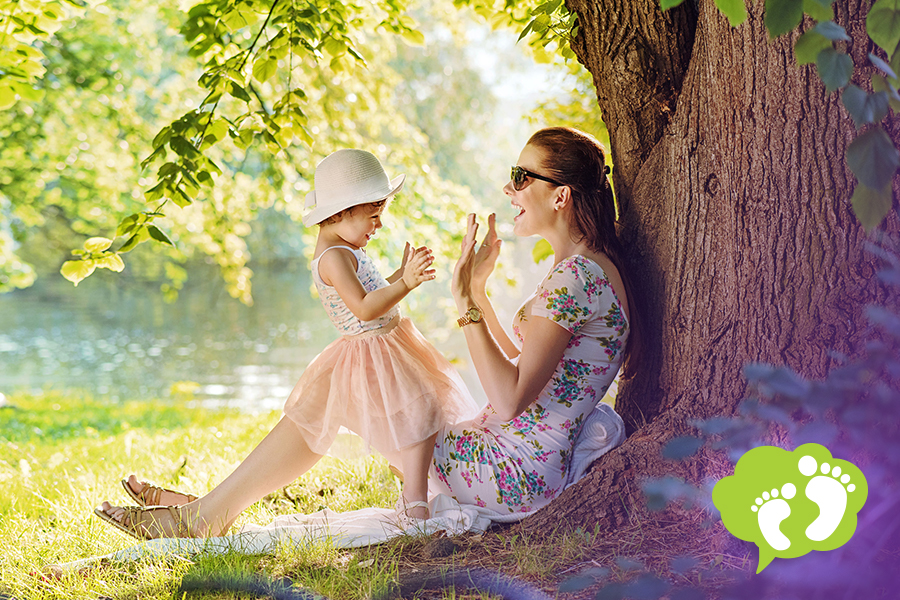
When speaking to the child- get down to their level- speak slowly and clearly and use simple sentences. This will encourage eye contact and appropriate social communication skills.
Try to get the child to copy you. You can play copycat games. Children develop the art of imitation by first being able to imitate large body movements such as jumping, stomping his/her feet, and clapping their hands. Then children can copy facial expressions such as sticking out their tongue, making a silly face etc. Next children can begin to copy simple vowel sounds such as ooo, ahhh, uh-oh. Then you can begin to get the child to copy consonants and simple combination sounds such as mmmmm, and weeee.
Make sure the child can see your face when trying to get him/her to copy you. A mirror may also be used so that the child can see his/her reflection as well. This is especially helpful when copying facial expressions.
Give meaning to the child’s babble or attempts at communication- repeat what you think they are talking about, even if you are unsure, continue to respond to them. For example, you can say “Really? Tell me more.” Or you can say “WOW! That is interesting.” Children will often begin using the melody of a phrase or how it sounds using the ups and downs in a person’s voice, before saying the actual words. Remember, if it sounds like the child said a particular phrase, they probably did!
Do not expect the child to say words perfectly at the beginning. It is okay to use sounds that are close, or to leave off or change part of the word such as saying ka/car, or tat/cat. The first step is to get the child to start using vocabulary and to express his/her wants and needs, before fine tuning how they say a particular sound.
Continue to praise the child when he/she is attempting to use words to communicate.
Narrate the child’s actions or feelings. For example, you can say ”Wow you kicked the ball, good job!” or “You are very happy today!”
If the child begins to label items in his/her environment, such as looking at a favorite toy and saying “ball”. You can verbally respond to his/her word by using it in a slightly longer sentence, such as “that’s right, that is a red ball.” Using this technique will do several things, it will indicate to the child that he/she is being understood, you are praising his/her efforts at spoken communication, and you have provided additional information about the object, which can enhance the child’s ability to later use two word combinations such as “red ball.”
Angela Magoon, MS CCC-SLP
Speech Language Pathologist

